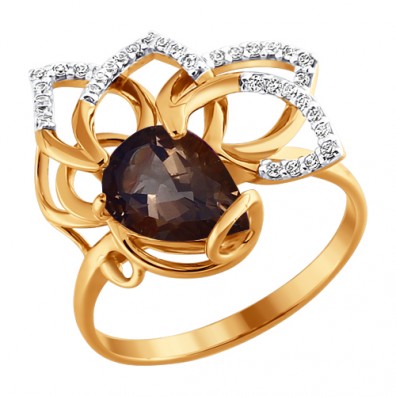Hardly anyone will dispute the fact that of all jewelry rings are the most popular. There will be no doubt about this conclusion if you look into the catalogs of the jewelry online store "Sokolov Jewerly". The incredible beauty of design and variety of forms is breathtaking. It would seem that for thousands of years mankind has been wearing rings of all colors and shades, which were made of various materials: metal, wood, bone, glass, stone, etc., but what the online jewelry store has exhibited in its virtual showcases amazes with the uniqueness of design and incredible imagination of jewelers. It is easy to understand that in the manufacture of jewelry masters put not only high creativity, but also their soul.

What are rings? Simply put, it is a rim or hoop that is put on the finger of the hand. In Russian, the word "ring" comes from the Old Slavonic "kolo", which means "wheel". The history of the ring dates back to antiquity. According to legend, the ancient Greek god Zeus, who chained Prometheus, who "stole" from him the fire, ordered him to wear on his finger one of the links of this chain. This ring eventually became a symbol of an unbroken spirit. In one of the ancient drawings on the finger of Prometheus, stretching out his hand with a lighted torch in the direction of people, there is a ring with a stone. According to legend, this stone was a fragment of the rock to which Prometheus was chained. That is, the ring was transformed into a ring.
Over the millennia, rings have changed their purpose. In ancient Egypt, they served as a kind of signature. Seal rings were worn on the index finger of the right hand. The imprint of these rings sealed contracts and other financial or trade deals. Rings were worn not only for decoration. Thus, shoemakers could not do without a thimble in the form of a ring. And archers fastened three fingers - index, middle and ring fingers - special knuckles in the form of rings, protecting their hands from cuts from the bowstring. In ancient Rome, commoners were forbidden to wear gold rings. Only the nobility enjoyed these privileges. However, in the 3rd century A.D. this ban was abolished. All citizens were allowed to wear gold rings, except for slaves, who could be satisfied with silver rings only.
In Russia in the pre-Petrine era, rings were worn on every finger, even on the thumb. Such a ring was called "napalok". It was a symbol of power. Later, the meaning of this ring changed. Pushkin, for example, wore the ring on his thumb, demonstrating his extravagance. He even dedicated one of his poems to this ring: "Guard me, my talisman." This ring was given to him by Catherine Vorontsova. After Pushkin's death, it passed to Zhukovsky, who gave it to his son. After him, the ring went to Turgenev, after whose death it went to Leo Tolstoy. He gave it to the Lyceum, where Pushkin once studied. However, during the February Revolution, the ring was stolen and its fate is unknown.


